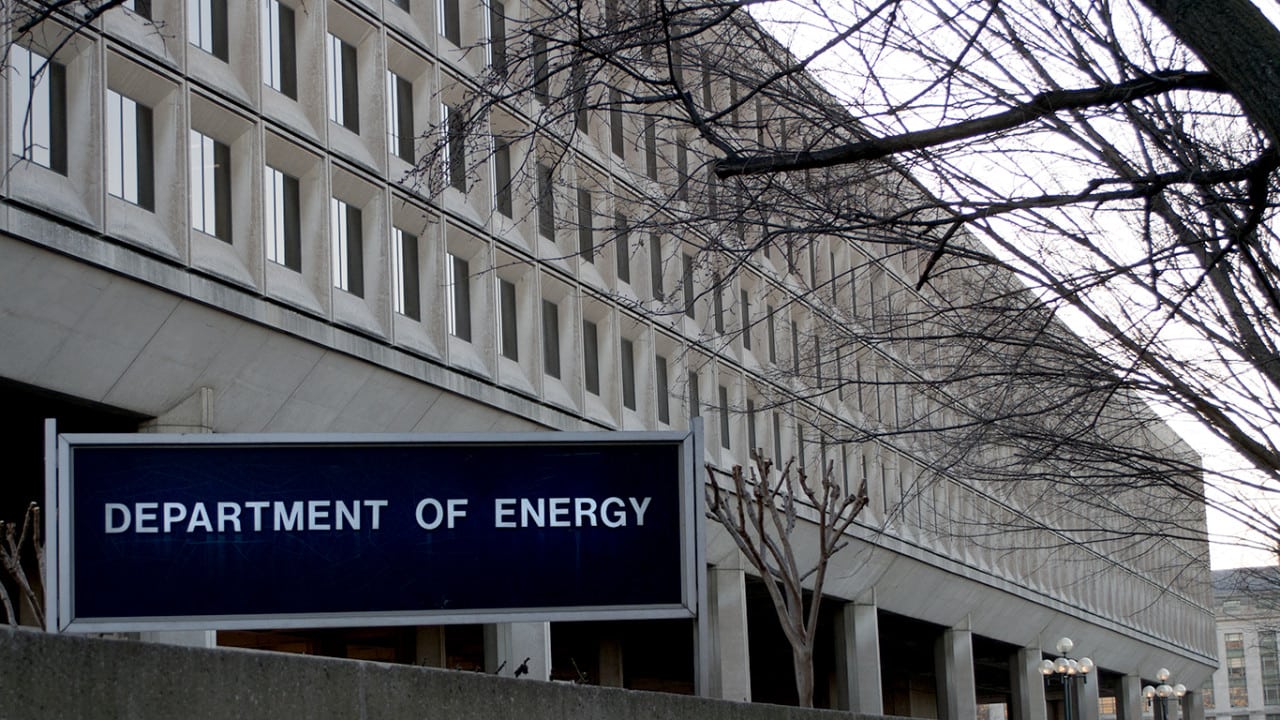
Congress has received the Department of Energy’s report on options for disposal of Greater-Than-Class C and Class-C-Like Waste, setting the stage for legislative approval of the department’s preferred alternative to potentially divide the material between commercial sites and DOE’s Waste Isolation Pilot Plant in New Mexico.
The Energy Department projects the United States will hold roughly 12,000 cubic meters of GTCC low-level radioactive waste and GTCC-like waste by 2083. That would be 160 million curies of radioactivity, encompassed in three waste types generated by government and commercial operations: activated metals produced in decommissioning of nuclear power plants; sealed sources used in medical, industrial, and oil and gas exploration operations; and other waste such as contaminated scrap metal, filters, soil, and sludge.
The waste today is held on-site by the generators. The federal government is on the hook for disposing of this material under the 2005 Energy Policy Act, but to date has no facility designated for that purpose. In a February 2016 environmental impact statement, DOE laid out five disposal options: no action, intermediate-depth borehole, enhanced near-surface trench, above-grade vault, and WIPP. It selected as its preferred method land disposal at generic commercial facilities and/or WIPP.
The Waste Isolation Pilot Plant, the underground mine used for disposal of DOE’s transuranic waste, is still ramping up operations after being closed for nearly three years following a vehicle fire and separate radiation release in February 2014. That puts the focus, for now, on GTCC waste disposal at commercial sites.
“Full waste emplacement operations at WIPP are not expected until the 2021 timeframe, and therefore the Department is primarily considering disposal at generic commercial facilities,” says the November DOE report to Congress, required under the Energy Policy Act. “The preferred alternative does not include disposal at any DOE sites other than WIPP.”
Several other DOE locations were considered for GTCC waste disposal in the environmental impact statement, including the Hanford Site in Washington state, the Idaho National Laboratory, the Los Alamos National Laboratory in New Mexico, the Nevada National Security Site, and the Savannah River Site in South Carolina.
Disposal at WIPP is projected to cost $1,630 per cubic foot to build 26 additional rooms at the underground mine, for a total cost of $690 million in 2016 dollars, according to the DOE report. That is higher than the other disposal options considered for DOE sites: intermediate-depth borehole ($400 million), enhanced near-surface trench ($300 million), and above-grade vault ($620 million).
The report indicates those other land-disposal methods could be used at the generic commercial properties.
“The cost to operate the WIPP geologic repository is higher than other alternatives because in general, staffing/labor, waste handling, safety, equipment, infrastructure, maintenance, utilities, oversight, and regulatory requirements for a geologic repository are far more complex than for near-surface land disposal options,” the DOE report says.
Fee options for funding disposal involve having waste generators pay into a fund at the time of waste generation or charging a fee when the waste is delivered for disposal, DOE said in its report.
There are currently only four facilities licensed by the U.S. Nuclear Regulatory Commission for disposal of low-level radioactive waste: Waste Control Specialists’ complex in Andrews County, Texas; US Ecology’s site on the Hanford Site; and EnergySolutions’ properties in Clive, Utah, and Barnwell, S.C. These would represent the generic commercial facilities cited by DOE.
“We are pleased to see DOE submit that report to Congress. We’re a step closer to addressing this issue,” Chuck McDonald, spokesman for Waste Control Specialists, said on Thursday.
While he did not cite a specific amount, McDonald said WCS is confident it could manage a significant amount of the GTCC waste via near-surface disposal.
US Ecology is not taking a position on the DOE recommendation, Joe Weismann, vice president for government and radiological affairs, told RadWaste Monitor. A spokesman said EnergySolutions had no comment on the matter.
The Energy Communities Alliance, which represents communities located near DOE facilities, is still reviewing the report, but its members would want the opportunity for public comment on the preferred alternative, said Kara Colton, the Washington, D.C., organization’s director of nuclear energy programs.
Congress would have to take a number of steps to allow DOE’s preferred disposal method to proceed, including passing legislation on a cost-recovery system for disposal and for authorization to dispose of the waste at WIPP, which is now designated solely for transuranic waste.
“The actual start date for operations is uncertain at this time and will depend upon the alternative or alternatives selected, the preparation of additional [National Environmental Policy Act] analyses, if necessary, characterization studies, and other actions necessary to initiate and complete construction and operation of a GTee LLRW and GTee-like waste disposal facility,” DOE said.